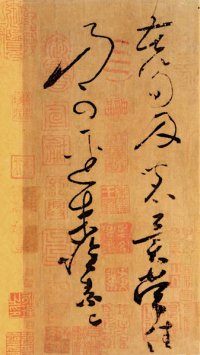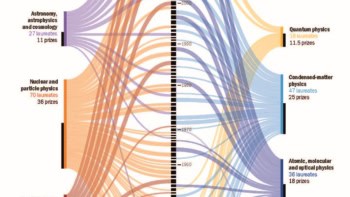 Huai Su’s fractal calligraphy
Huai Su’s fractal calligraphyBy Hamish Johnston
In the scientific world, fractals were first identified in the mid-1970s by the mathematican Benoît Mandelbrot.
However, it’s possible that artists and artisans have long been using the fragmented shapes in their work.
In 1999, two Australian physicists famously showed that the “paint-drip” canvasses of Jackson Pollock could be dated by computing their fractal dimension — which tended to increase as Pollock matured as an artist.
Now, Yuelin Li of Argonne National Lab in the US has posted a paper on the arXiv preprint server claiming that calligraphy done by the “maniac Buddist monk” Huai Su more than 1200 years ago contains fractals. Li analysed a request for “bitter bamboo shoots and tea” written by the monk and found that it can be characterized by two different fractal dimensions.
Li believes that the fractal nature of some artworks “can be attributed to the artist’s pursuit of the hidden order of [the] fractal”.



